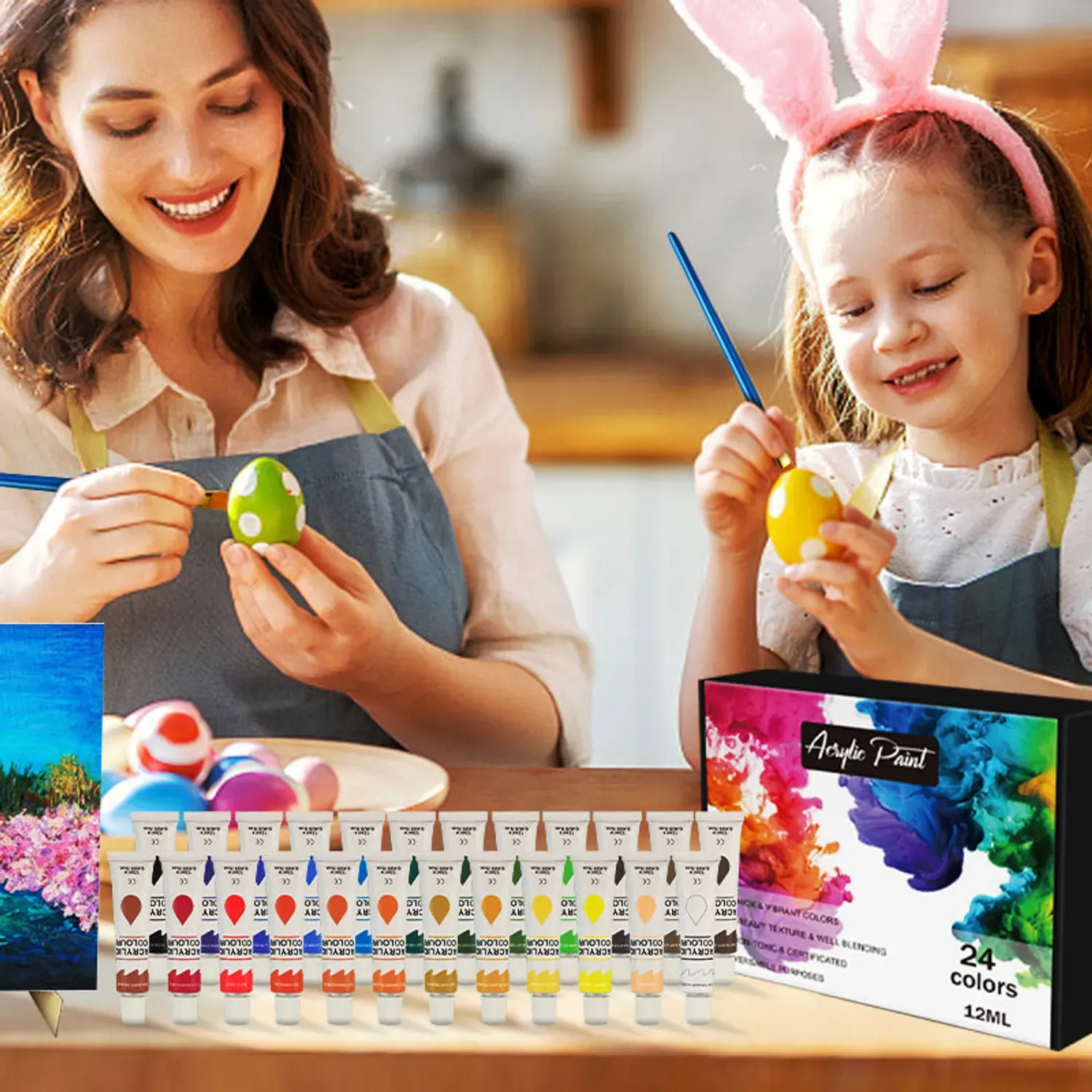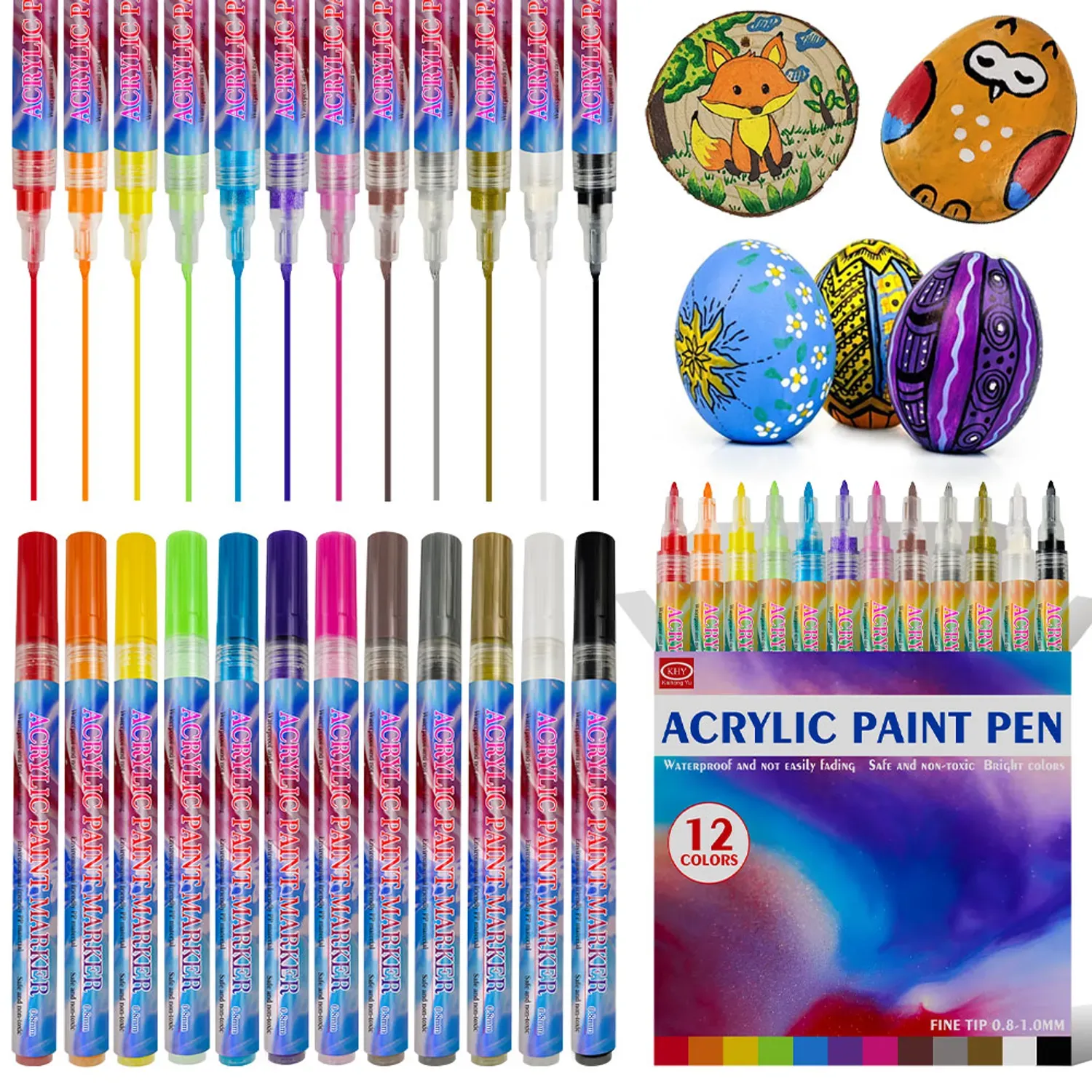betty@kaihong888.com

Get A Quote
Which Is Better for Beginners: Watercolor or Acrylic?
Understanding Acrylic Paints
Acrylic paints are a popular choice among artists due to their versatility and vibrant colors. They are made of pigment suspended in acrylic polymer emulsion, giving them a fast-drying property. This allows artists to work quickly and build layers with ease. Acrylic paints are known for their durability and ability to retain color quality over time without yellowing.
Acrylics offer a wide range of applications, from traditional canvas painting to mixed media and even mural work. They can be diluted with water for a watercolor-like effect or used straight from the tube for bold, opaque strokes. Additionally, acrylic paints come in various kits and sets, catering to beginners with essential colors and tools to kickstart their artistic journey.
Understanding Watercolors
Watercolor paints are beloved for their transparency and fluidity, creating soft, delicate washes of color. They consist of pigment suspended in a water-based solution, allowing artists to achieve subtle gradients and intricate details. Unlike acrylics, watercolors require a specific type of paper that can withstand the wetting and drying process without warping.
Watercolors are ideal for creating landscapes, botanical illustrations, and delicate portraits. They offer versatility in techniques such as wet-on-wet blending and dry brush effects. Beginners can find watercolor paint kits and sets that include a selection of colors and brushes, making it accessible for those just starting out in watercolor painting.
Key Differences Between Acrylic and Watercolor
Composition and Drying Properties
Acrylic paints are composed of pigment suspended in acrylic polymer emulsion, resulting in a fast-drying medium. Conversely, watercolor paints consist of pigment suspended in a water-based solution, allowing for a more fluid application.
Versatility and Ease of Use
Acrylic paints offer versatility in terms of application and technique. They can be used on various surfaces and can mimic the characteristics of other mediums like oil or watercolor. On the other hand, watercolors are renowned for their transparency and delicate washes, requiring precision and control during application.
Texture and Finish
Acrylic paints dry to a durable, opaque finish, retaining brushstrokes and texture. Watercolors, however, dry to a translucent finish, allowing light to pass through the layers, resulting in a unique luminosity.
Considerations for Beginners
Cost Comparison Between Acrylic Paint Kits and Watercolor Paint Kits
When considering the cost, acrylic paint kits may initially seem more expensive due to the need for additional materials like canvases and palettes. However, watercolor paint kits often require specific paper and brushes, which can also contribute to the overall cost.
Accessibility of Materials and Tools for Each Medium
Both acrylic and watercolor paints are widely available, but the accessibility of materials and tools may vary depending on location and budget. Acrylic paints are more forgiving in terms of surface requirements, whereas watercolor paper is essential for achieving optimal results with watercolors.
Durability and Longevity of Artworks Created with Each Medium
Acrylic paintings are known for their durability and resistance to fading, making them suitable for long-lasting artworks. Watercolors, however, may require proper framing and care to prevent fading and damage over time.
Factors to Consider When Choosing Between Watercolor and Acrylic for Beginners
Beginners should consider their artistic preferences, working style, and desired outcomes when choosing between watercolor and acrylic paints. Factors such as drying time, ease of correction, and desired texture should also be taken into account. Ultimately, experimenting with both mediums can help beginners discover their preferred painting style and techniques.
Advantages of Acrylic Paints for Beginners
Quick-Drying Nature and Ease of Layering
Acrylic paints dry quickly, allowing beginners to work efficiently without long waiting times between layers. This fast-drying property enables artists to experiment with layering techniques and build up textures and details in their artwork.
Versatility in Techniques and Styles
Acrylic paints offer a wide range of techniques and styles for beginners to explore. From thick impasto applications to thin, watercolor-like washes, acrylics can adapt to various artistic expressions. Beginners can easily achieve different effects by adjusting the consistency of the paint and experimenting with different tools.
Advantages of Watercolors for Beginners
Ease of Setup and Cleanup
Watercolor painting requires minimal setup and cleanup, making it convenient for beginners. All you need are watercolor paints, brushes, paper, and water. Cleanup is as simple as rinsing brushes with water, and there's no need for harsh solvents or mediums.
Budget-Friendly Options for Beginners
Watercolor paints and materials are often more affordable compared to acrylics, making them an ideal choice for beginners on a budget. Starter sets of watercolor paints and brushes are readily available at reasonable prices, allowing beginners to start painting without breaking the bank.
Flexibility in Correcting Mistakes and Experimenting with Techniques
Watercolors offer flexibility in correcting mistakes and experimenting with different techniques. Unlike acrylics, watercolors can be lifted off the paper even after drying, allowing beginners to adjust or remove unwanted paint. This forgiving nature encourages exploration and creativity, making watercolors an excellent choice for beginners looking to experiment and learn.
Conclusion
As beginners, it's essential to experiment with both watercolor and acrylic paints to discover your preferences and artistic style. Each medium offers unique opportunities for creativity and expression, and exploring both can help you grow as an artist.
For beginners looking to dive into the world of painting, consider exploring acrylic paint kits and watercolor paint kits from KHY. These starter sets provide essential materials and tools to kickstart your artistic journey and unleash your creativity. Visit KHY's website to discover a wide range of high-quality paint kits customized for beginners.

